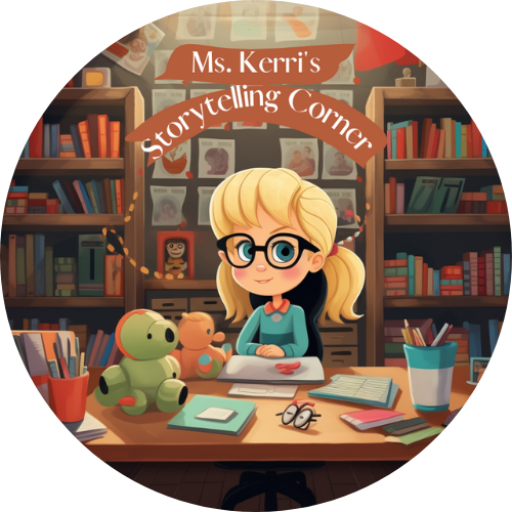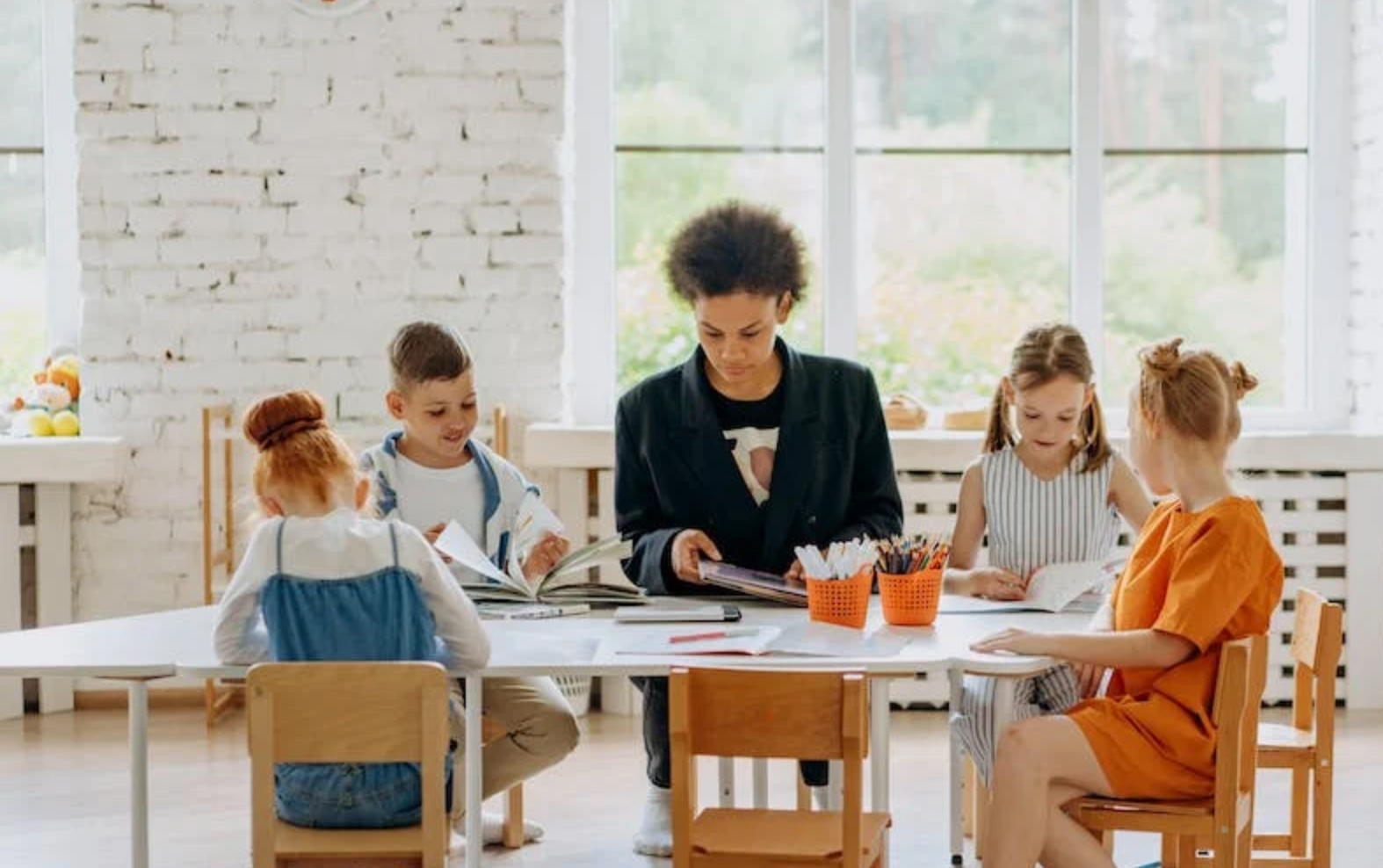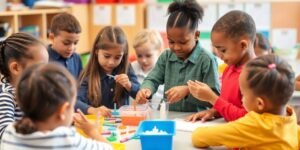Bilingual education is a dynamic and enriching approach to teaching that embraces cultural diversity and fosters a supportive environment for multilingual learners. By integrating language instruction with cultural elements and providing tailored strategies, bilingual education not only enhances language proficiency but also empowers students to become global citizens. This article delves into the various aspects of bilingual education, offering insights into its foundations, effective teaching strategies, advocacy efforts, resources for educators, and ways to celebrate linguistic diversity in the classroom.
Key Takeaways
- Bilingual education is essential for supporting multilingual learners and preparing them for global leadership roles.
- Advocacy for multilingual learners can be incorporated into daily educational practices, both in small and significant ways.
- Universal Design for Learning (UDL) is a critical framework that can enhance instruction for multilingual learners.
- Culturally inclusive materials and professional development are vital resources for bilingual educators.
- Celebrating linguistic diversity in the classroom is crucial for creating an inclusive and supportive learning environment.
The Foundations of Bilingual Education
Understanding the Basics of Bilingual Learning
Bilingual education is a powerful bridge connecting languages and cultures, fostering cognitive growth and academic achievement. At the heart of this educational approach is the recognition of early learning as a critical period for language acquisition. Early childhood learning sets the stage for lifelong linguistic and cultural competencies.
- Embrace linguistic diversity as an asset.
- Tailor instruction to meet diverse learning needs.
- Celebrate each milestone in language development.
Bilingual education is not just about learning a second language; it’s about nurturing a world-ready mind.
Understanding the basics of bilingual learning involves appreciating the unique journey of each student. It’s about creating a space where languages and cultures intersect, enriching the educational experience for all.
The Role of Culture in Language Instruction
Culture is the bedrock of meaningful language instruction. It shapes the way words are understood and used, infusing language with rich context and history. Language cannot be separated from culture; they are intertwined, influencing and reinforcing each other. Recognizing this connection is crucial for effective bilingual education.
Culture in the classroom goes beyond mere exposure to customs or traditions. It involves integrating cultural perspectives into the learning process, making language relatable and relevant. Here are some key strategies:
- Embrace cultural narratives to enhance vocabulary and grammar lessons.
- Use cultural references to explain linguistic nuances and idioms.
- Encourage students to share their own cultural experiences, fostering a diverse learning environment.
Only after cultural issues become an inherent part of the language curriculum and instruction, can students be successful in their target language learning.
By weaving cultural threads into language instruction, educators can create a tapestry of learning that resonates with students on a deeper level. This approach not only aids in language acquisition but also promotes cultural understanding and respect.
Creating a Supportive Environment for Multilingual Learners
To foster a nurturing space for multilingual learners, educators must embrace diversity as a classroom norm. A supportive environment is not just about language proficiency; it’s about valuing each student’s cultural identity and linguistic heritage.
- Recognize and celebrate linguistic achievements, big or small.
- Provide clear language objectives and model academic language.
- Encourage peer support and collaborative learning opportunities.
Creating a supportive environment goes beyond the curriculum. It’s about building a community where every voice is heard and every culture is celebrated.
By implementing these practices, teachers can create a dynamic learning atmosphere that not only respects but also leverages the rich tapestry of languages and cultures present in their classrooms.
Strategies for Effective Bilingual Teaching
Incorporating Universal Design for Learning (UDL)
Embrace UDL to unlock the full potential of every student. Universal Design for Learning is the blueprint for creating instructional goals, methods, materials, and assessments that work for everyone. It’s not a one-size-fits-all solution, but rather a flexible approach that can be customized for individual needs.
- Recognize the uniqueness of each learner
- Offer multiple means of engagement
- Provide various ways of presenting information
- Allow for different methods of action and expression
By considering the diverse needs of multilingual learners, UDL paves the way for equitable access to education.
UDL is more than a teaching strategy; it’s a commitment to accessible education for all. Start small, think inclusively, and watch your students thrive.
Differentiation and Personalized Learning Approaches
In the realm of bilingual education, differentiation is not just a strategy, it’s a necessity. Every learner’s journey is unique, and personalized learning approaches are the compass that guides them. By tailoring instruction to meet individual needs, educators can foster a more inclusive and effective learning environment.
- Montessori methods empower students to take charge of their learning through self-directed activities.
- Project-based learning for children harnesses their natural curiosity and channels it into meaningful, real-world projects.
- Cognitive learning theories remind us that understanding how students process information is crucial to designing responsive educational experiences.
Embracing these approaches not only supports linguistic development but also nurtures a learner’s entire cognitive and cultural identity. The goal is to create a classroom where every student feels valued and motivated to learn.
Engaging Multilingual Learners through Interactive Methods
Interactive methods are the lifeblood of dynamic bilingual classrooms. Engage learners by turning lessons into a two-way street. Here’s how:
- Use Interactive Read Alouds to model pronunciation and inflection.
- Create Interactive Word Walls that grow with students’ vocabulary.
- Incorporate games that reinforce language structures in a fun way.
Embrace the diversity of your classroom by encouraging students to share their linguistic knowledge. This not only enriches the learning experience but also fosters a sense of belonging.
Remember, the goal is to create a language-rich environment where multilingual learners feel valued and are actively involved in their own learning journey.
Advocacy and Empowerment in Bilingual Settings
The Importance of Advocacy for Multilingual Learners
Advocacy for multilingual learners is not a colossal task reserved for the few; it’s a series of intentional, everyday actions. Educators play a pivotal role in ensuring that multilingualism is seen as an asset, not a barrier. By championing the unique linguistic skills of students, teachers lay the groundwork for a more inclusive and empowering educational experience.
- Recognize and celebrate linguistic diversity in the classroom.
- Provide high-quality, comprehensible, and culturally responsive instruction.
- Understand and leverage the intersection of UDL & multilingual learners.
Advocacy is embedded in the small gestures as much as the grand ones. It’s about creating a space where every language is a key to unlocking new worlds of knowledge.
Remember, advocacy is not a one-off event but a continuous journey. It’s about building bridges between languages and cultures, fostering an environment where every student feels valued and heard. Start small, stay consistent, and watch as your efforts help shape future global leaders.
Empowering Students and Teachers in Bilingual Education
Empowerment in bilingual education is not just a goal; it’s a necessity. Teachers and students thrive when they are given the tools and autonomy to explore language and culture on their own terms. The Reggio Emilia approach, with its emphasis on self-directed, experiential learning, is a beacon for those seeking to empower learners in bilingual settings.
- Recognize and validate each student’s linguistic heritage.
- Encourage risk-taking and celebrate mistakes as learning opportunities.
- Foster a classroom culture where every voice is heard and valued.
Empowerment comes from creating a learning environment where students and teachers alike are agents of their own linguistic journey. It’s about building confidence, fostering independence, and nurturing a sense of ownership over the learning process.
By embracing these principles, we lay the groundwork for a more dynamic and inclusive bilingual education experience, where every participant is both a teacher and a learner.
Building Community Support for Bilingual Programs
Community engagement is the backbone of successful bilingual programs. Foster partnerships with local businesses, cultural institutions, and higher education to create a network of support. These collaborations can provide resources, mentorship, and real-world language practice for students.
Outreach is key to building community support. Host events like multilingual book fairs, cultural festivals, and parent workshops to showcase the value of bilingual education. Involve community leaders and leverage social media to amplify your message.
- Engage parents and caregivers in their child’s language journey.
- Encourage local media to feature success stories from the program.
- Partner with libraries to host language learning clubs.
By uniting diverse stakeholders, we can cultivate an ecosystem that not only appreciates but actively invests in multilingual education.
Resources and Tools for Bilingual Educators
Selecting Culturally Inclusive Books and Materials
Diversity on the bookshelf is not just a trend; it’s a powerful tool for engagement and inclusion. Ensure your library reflects the rich tapestry of student backgrounds. Start by auditing your current collection. Are the stories diverse? Do the characters resonate with your students’ experiences?
Inclusivity isn’t just about having a variety of books; it’s about the messages they carry. Seek out titles that challenge stereotypes and celebrate differences. Remember, a book can be a mirror for a student to see themselves or a window into the lives of others.
- Review current book selections for diversity
- Research organizations like We Need Diverse Books for recommendations
- Encourage student input on books they’d like to see
- Continuously update your collection with culturally responsive choices
Embrace the opportunity to transform your bookshelves into a dynamic resource that fosters understanding and curiosity among all learners.
Professional Development Opportunities for Bilingual Teachers
Elevate your teaching skills and stay ahead in the ever-evolving educational landscape. Professional development is key to enriching your instructional strategies and understanding of multilingual learners. Dive into a variety of programs designed to bolster your expertise.
- Engage with cutting-edge webinars and interactive workshops.
- Explore comprehensive online PD courses tailored for language educators.
- Connect with a network of peers through conferences and learning communities.
Embrace the journey of continuous learning to inspire and empower your students.
Stay informed about the latest trends and research in bilingual education. The Bilingual Teacher Professional Development Program (BTPDP) offers a repository of resources for expanded learning opportunities and nutritional guidance to support the holistic development of multilingual learners.
Utilizing Technology to Enhance Language Learning
In the digital age, technology is a game-changer for bilingual education. Interactive platforms transform language learning from a static experience to an engaging journey. Tools like language apps and online games make practice fun and accessible.
- Virtual reality (VR) immerses students in new linguistic environments.
- Speech recognition software aids in perfecting pronunciation.
- Online forums provide real-time language practice with native speakers.
Embrace tech to tailor learning experiences to each student’s needs. Technology bridges gaps, allowing learners to explore languages at their own pace.
Remember, the goal is to integrate technology seamlessly into the curriculum, enhancing traditional teaching methods without overwhelming students or educators.
Celebrating Linguistic Diversity in the Classroom
Recognizing and Valuing Students’ Linguistic Backgrounds
Every student’s voice is a unique linguistic tapestry, woven with threads of personal and cultural history. Recognizing and valuing these linguistic backgrounds is not just about acknowledging diversity; it’s about embracing and integrating it into the classroom mosaic.
Heritage languages enrich the educational experience for all students, providing a gateway to global perspectives and deeper cultural understanding. By affirming culture and cultural identity, we empower students to contribute their full selves to the learning environment.
- Celebrate linguistic milestones and achievements
- Encourage sharing of cultural stories and traditions
- Foster peer-to-peer language practice and exchange
Embracing linguistic diversity is a journey of continuous discovery, where each student’s language is a key to unlocking collective growth and understanding.
Creative Approaches to Celebrate Multilingualism
Embrace the tapestry of languages in your classroom with vibrant, creative celebrations. International Mother Language Day on February 21st is a perfect springboard for honoring linguistic diversity. Mark the calendar and plan culturally rich activities that spotlight each student’s linguistic heritage.
- Host a ‘Language Fair’ where students showcase their mother tongues through music, stories, and art.
- Create a ‘Multilingual Mural’ with words of welcome in all represented languages.
- Encourage ‘Language Pals’ to pair up and teach each other phrases in their native languages.
By involving students and their families, we foster an inclusive learning atmosphere and community.
Remember, celebrating multilingualism isn’t a one-day event. It’s a continuous journey of recognizing and valuing our students’ linguistic backgrounds, ensuring they feel seen and heard every day.
Fostering an Inclusive Atmosphere for Language Exploration
Creating an inclusive atmosphere for language exploration is pivotal in celebrating linguistic diversity. Inclusive classrooms prioritize individual needs, adapting teaching methods to promote interaction and empathy among students. This approach not only fosters academic excellence but also cultivates a supportive community.
Preschool activities are a fantastic starting point for fostering inclusivity. Simple, engaging tasks can lay the groundwork for a lifetime of language curiosity and respect for multilingualism. Here are a few activities to consider:
- Storytelling sessions with books from diverse cultures
- Sing-alongs in different languages
- Art projects that incorporate language elements
By integrating these activities into the classroom, educators can create a dynamic learning environment where every student feels valued and heard.
Remember, the journey to an inclusive classroom is ongoing. It requires continuous effort, creativity, and a commitment to celebrating every student’s unique linguistic background.
In a world where every child’s voice deserves to be heard, embracing linguistic diversity in the classroom is not just important—it’s essential. At Ms. Kerri’s Story Telling Corner, we celebrate the rich tapestry of languages and cultures that our students bring to the learning environment. Our resources and activities are designed to foster an inclusive atmosphere where every child feels valued and empowered. Discover how we can help you cultivate a passion for learning in your children by visiting our website and exploring our range of services, from interactive storytime sessions to early learning resources. Join us in creating a brighter future for every child, regardless of language or background.
Embracing the Future Through Bilingual Education
As we conclude our exploration of bilingual education, it’s evident that fostering cultural diversity and linguistic proficiency is not just an educational imperative but a bridge to a more inclusive and interconnected world. The practical strategies and insights shared throughout this article underscore the importance of embracing multilingualism as a valuable asset. By advocating for and implementing bilingual programs, we empower learners to navigate and contribute to a global society with confidence and empathy. Let us continue to support and celebrate the rich tapestry of languages and cultures that our multilingual learners bring to our classrooms, for they are indeed the architects of tomorrow’s world.
Frequently Asked Questions
What are the core principles of bilingual education?
Bilingual education rests on the principles of language proficiency, cultural competence, and academic achievement in two languages. It aims to support multilingual learners by providing instruction in both their native language and the target language.
How does culture play a role in bilingual learning?
Culture is deeply intertwined with language; it shapes the context in which language is used and understood. Bilingual education incorporates cultural elements to make learning more relevant and engaging, while also promoting cultural awareness and appreciation.
What is Universal Design for Learning (UDL) and how does it apply to multilingual learners?
UDL is an educational framework that aims to improve and optimize teaching and learning for all people based on scientific insights into how humans learn. It’s particularly beneficial for multilingual learners as it accommodates diverse learning styles and language needs.
What are some effective strategies for differentiating instruction in a bilingual classroom?
Differentiation in a bilingual classroom may include tailored learning experiences, flexible grouping, scaffolded lessons, and personalized learning paths to meet the diverse needs of multilingual learners at various language proficiency levels.
How can teachers advocate for bilingual and multilingual learners?
Teachers can advocate for bilingual and multilingual learners by promoting the benefits of multilingualism, supporting language rights, seeking resources and support for bilingual programs, and fostering an inclusive school environment that values linguistic diversity.
What types of resources are available to support educators of multilingual learners?
Educators can access a variety of resources such as culturally inclusive books and materials, professional development courses, online communities, and technology tools designed to enhance language learning and teaching in bilingual settings.


Ms. Kerri’s Corner provides a exciting virtual space for preschool learning. Through a variety of engaging activities, she exposes young minds to early math, literacy, science and social-emotional skills in a developmentally appropriate way. Centers for blocks, art, books and music allow children to explore hands-on learning at their own pace. Guided lessons subtly introduce number sense, letter sounds and narrative thinking. Careful observation gives insight into each child’s progress across domains. Viewers are also invited to participate, reinforcing that their ideas are valued. By making learning fun yet purposeful, Ms. Kerri lays the groundwork for future academic success while fostering creativity and imagination. Her program offers preschoolers valuable screen-based learning experiences.








